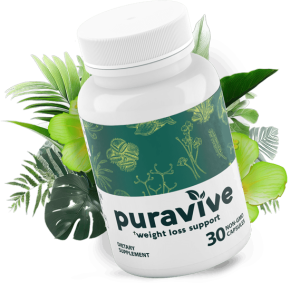Unlocking Rotisserie Chicken Nutrition: A Comprehensive Guide.
Discover the nutritional advantages of rotisserie chicken and learn how to make healthier choices with insights into its protein content, fat levels, and sodium intake. Explore tips for optimizing your diet with this convenient and flavorful option.
Introduction

Rotisserie chicken is a favorite go-to meal for many due to its delicious flavor and convenience. But beyond its taste and ease, what does rotisserie chicken bring to the table nutritionally? In this article, we’ll dive into the nutritional profile of rotisserie chicken, its benefits, potential downsides, and how you can incorporate it into a balanced diet.
What is Rotisserie Chicken?

History of Rotisserie Chicken
Rotisserie cooking dates back centuries, with origins in medieval kitchens where meat was slowly cooked over an open fire. This method has evolved into the modern rotisserie ovens found in supermarkets today.
Popularity and Convenience
Rotisserie chicken has become incredibly popular due to its convenience. Ready to eat and available in most grocery stores, it saves time and effort in meal preparation.
Rotisserie Chicken Nutrition
Nutritional Overview of Rotisserie Chicken
| Nutrient | Amount per 100g (without skin) | Daily Value (%) |
|---|---|---|
| Calories | 150 | 8% |
| Protein | 23g | 46% |
| Total Fat | 5g | 8% |
| Saturated Fat | 1.5g | 8% |
| Cholesterol | 70mg | 23% |
| Sodium | 280mg | 12% |
| Carbohydrates | 0g | 0% |
| Fiber | 0g | 0% |
| Sugars | 0g | 0% |
| Vitamin A | 30IU | 1% |
| Vitamin C | 0mg | 0% |
| Calcium | 11mg | 1% |
| Iron | 1mg | 6% |
| Potassium | 190mg | 5% |
| Phosphorus | 180mg | 18% |
| Selenium | 20mcg | 36% |
| Niacin (B3) | 10mg | 50% |
| Vitamin B6 | 0.6mg | 30% |
Tips for Understanding Rotisserie Chicken Nutrition
- High Protein Content: With 23 grams of protein per 100 grams, rotisserie chicken is an excellent source of protein, making it ideal for muscle repair and growth.
- Moderate Calorie Count: At 150 calories per 100 grams, rotisserie chicken provides a moderate calorie intake, making it a good option for weight management.
- Low Carbohydrates: Containing zero grams of carbohydrates, it’s suitable for low-carb diets and can be paired with various vegetables and grains.
- Fat Content: Total fat is 5 grams per 100 grams. For a leaner meal, remove the skin to reduce fat intake.
- Sodium Awareness: With 280 milligrams of sodium per 100 grams, it’s essential to monitor sodium intake, especially for those with hypertension. Opt for low-sodium varieties if available.
- Rich in Essential Minerals: Rotisserie chicken is a good source of phosphorus and selenium, supporting bone health and immune function, respectively.
- Cholesterol Content: Contains 70 milligrams of cholesterol per 100 grams, which is something to consider for those managing cholesterol levels.
- Vitamin Boost: High in niacin (B3) and vitamin B6, contributing to energy metabolism and brain health.
- Iron and Potassium: Provides 6% of daily iron needs and 5% of potassium, aiding in oxygen transport and electrolyte balance.
- Calcium and Vitamin A: Although present in smaller amounts, these contribute to bone health and vision, respectively.
By understanding these nutritional aspects, you can better incorporate rotisserie chicken into a balanced diet and make informed dietary choices.
Rotisserie Chicken Nutrition
Health Benefits of Rotisserie Chicken

- High Protein Content: Rotisserie chicken provides a substantial amount of protein, essential for muscle repair, growth, and overall body function. Including it in your diet can help meet your daily protein needs effectively.
- Low in Carbohydrates: Since rotisserie chicken contains virtually no carbohydrates, it’s an excellent choice for low-carb and ketogenic diets, helping to maintain steady blood sugar levels.
- Rich in B Vitamins: It is a good source of B vitamins like niacin (B3) and vitamin B6, which are vital for energy metabolism, brain health, and the proper functioning of the nervous system.
- Source of Selenium: Selenium is an important mineral for thyroid function and antioxidant defense. Rotisserie chicken provides a significant amount of this nutrient, supporting overall health.
- Supports Bone Health: With its phosphorus content, rotisserie chicken helps maintain strong bones and teeth, making it beneficial for skeletal health.
- Convenience and Versatility: Rotisserie chicken offers convenience and versatility, allowing you to use it in various dishes, reducing the time and effort required for meal preparation while ensuring you receive a nutritious meal.
- Rich in Iron: Iron is crucial for the production of hemoglobin and the prevention of anemia. Rotisserie chicken provides a good amount of iron, supporting oxygen transport in the blood.
- Low in Sugar: With no added sugars, rotisserie chicken is suitable for people looking to reduce their sugar intake, helping to manage weight and reduce the risk of diabetes.
Rotisserie Chicken Nutrition
Comparison of Protein Content: Rotisserie Chicken vs. Baked Chicken

| Comparison Aspect | Rotisserie Chicken | Baked Chicken | Description |
|---|---|---|---|
| Protein per 100g | 23g | 24g | Both types provide high protein content, ideal for muscle repair and growth. |
| Cooking Method | Slow-cooked on a rotisserie spit | Oven-baked without added fats | Different cooking methods might slightly affect moisture retention and texture. |
| Flavor | Enhanced with seasonings and juices | Typically less seasoned, more natural | Rotisserie chicken is often more flavorful due to added seasonings. |
| Fat Content | Slightly higher if skin is consumed | Generally lower if baked without skin | Removing the skin from both can significantly reduce fat content. |
| Convenience | Ready-to-eat, store-bought | Requires preparation and cooking time | Rotisserie chicken offers greater convenience for quick meals. |
Analysis
- Protein Comparison: Both rotisserie and baked chicken are excellent sources of protein, with baked chicken slightly edging out rotisserie chicken by a gram per 100 grams. Either option supports muscle building and repair.
- Cooking Methods and Texture: The cooking method can affect the texture and moisture of the chicken. Rotisserie chicken is juicier and more tender because it undergoes slow cooking, while baked chicken, depending on preparation, may become slightly drier but still retains a good texture.
- Flavor Profiles: Rotisserie chicken is often more flavorful due to the seasoning and self-basting nature of the cooking process. Typically, individuals prepare baked chicken with fewer seasonings, which provides a more natural chicken flavor but allows for seasoning according to taste.
- Fat Content Considerations: Both types can be high in fat if the skin is consumed. Removing the skin from either type reduces the fat content significantly, making both healthier options. Baked chicken without skin generally has a lower fat content compared to rotisserie chicken with skin.
- Convenience Factor: Rotisserie chicken offers convenience as it is pre-cooked and ready to eat, saving time on meal preparation. Baked chicken requires preparation and cooking time, making it less convenient but allowing for more control over ingredients and cooking methods.
By understanding these comparisons, you can choose the type of chicken that best fits your dietary needs and lifestyle, whether you prioritize convenience, flavor, or nutritional content.
Rotisserie Chicken Nutrition
Potential Downsides of Rotisserie Chicken

- High Sodium Content: Store-bought rotisserie chicken often contains high levels of sodium due to the seasoning and preservatives used. This can contribute to high blood pressure and other cardiovascular issues.
- Fat Content: The skin of rotisserie chicken contains a significant amount of fat, including saturated fat, which can impact heart health if consumed in large quantities.
- Additives and Preservatives: Many manufacturers season rotisserie chickens with additives and preservatives to enhance flavor and extend shelf life. These can include artificial ingredients that may not be ideal for health.
- Caloric Intake: Eating the skin and dark meat can increase the calorie count, which may not be suitable for those on a calorie-restricted diet.
- Possible Antibiotics: Some commercially available rotisserie chickens may come from poultry raised with antibiotics, which can contribute to antibiotic resistance and other health concerns.
- Hidden Sugars: Some seasoning blends used on rotisserie chickens might contain hidden sugars, which can add unnecessary calories and affect blood sugar levels.
- Risk of Overeating: The convenience and flavor of rotisserie chicken can lead individuals to overeat, especially if they do not practice portion control.
- Uneven Nutritional Quality: Depending on the preparation and seasoning, the nutritional quality of rotisserie chicken can vary widely, making it difficult to gauge its healthfulness consistently.
By being aware of these potential downsides, you can make more informed choices about consuming rotisserie chicken and take steps to mitigate these risks, such as removing the skin, choosing organic options, and practicing portion control.
Rotisserie Chicken Nutrition
Comparison of Fat Content: Rotisserie Chicken vs. Fried Chicken
| Comparison Aspect | Rotisserie Chicken | Fried Chicken | Description |
|---|---|---|---|
| Total Fat per 100g | 5g | 13g | Fried chicken has significantly higher total fat content due to the frying process. |
| Saturated Fat | 1.5g | 3.5g | Saturated fat is more prevalent in fried chicken, increasing heart disease risk. |
| Trans Fats | Minimal | Possible presence | Fried chicken may contain trans fats, especially if fried in partially hydrogenated oils. |
| Calories from Fat | Moderate | High | A higher percentage of calories in fried chicken come from fat, contributing to its higher calorie content. |
| Skin Contribution | Higher fat if skin is consumed | Extremely high fat if breaded and fried with skin | Both types have higher fat content with skin, but frying further increases the fat level. |
Analysis
- Total Fat Content: Fried chicken contains more than double the total fat content compared to rotisserie chicken, primarily due to the frying process which adds additional fats.
- Saturated Fat Levels: The saturated fat content is also higher in fried chicken. This type of fat is linked to increased LDL cholesterol levels, which can raise the risk of heart disease.
- Presence of Trans Fats: While rotisserie chicken typically has minimal trans fats, fried chicken can contain trans fats, particularly if cooked in partially hydrogenated oils. Trans fats are associated with increased risk of heart disease.
- Caloric Impact: The higher fat content in fried chicken means a larger portion of its calories come from fat, making it a more calorie-dense option. This can impact weight management efforts.
- Impact of Skin: Both rotisserie and fried chicken have higher fat content if consumed with the skin. However, fried chicken, especially when breaded and fried with the skin on, has an even greater increase in fat content, making it a less healthy choice overall.
By understanding these differences, you can make more informed decisions about which type of chicken to include in your diet. Choosing rotisserie chicken, particularly when removing the skin, can offer a healthier alternative to fried chicken.
Rotisserie Chicken Nutrition
Comparison of Rotisserie Chicken, Baked Chicken, and Fried Chicken
| Comparison Aspect | Rotisserie Chicken | Baked Chicken | Fried Chicken | Description |
|---|---|---|---|---|
| Total Fat per 100g | 5g | 4g | 13g | Fried chicken has the highest fat content due to frying. |
| Saturated Fat | 1.5g | 1g | 3.5g | Saturated fat is highest in fried chicken, lower in baked. |
| Calories per 100g | 150 | 140 | 250 | Fried chicken has the most calories, followed by rotisserie and baked. |
| Protein per 100g | 23g | 24g | 21g | Baked and rotisserie chicken have similar protein content, slightly higher than fried. |
| Carbohydrates | 0g | 0g | 10g | Fried chicken contains carbohydrates from breading, unlike rotisserie and baked. |
| Sodium Content | 280mg | 70mg | 300mg | Fried and rotisserie chicken typically have higher sodium due to seasoning. |
| Cooking Method | Rotisserie oven | Oven-baked | Deep-fried | Different methods affect texture, flavor, and nutritional content. |
| Preparation Time | Pre-cooked and ready-to-eat | Requires time for seasoning and baking | Requires breading and frying, time-intensive | Rotisserie chicken is the most convenient. |
| Flavor Profile | Often seasoned and juicy | Natural flavor, can be seasoned | Crispy and flavorful due to frying | Each preparation offers a unique flavor experience. |
| Healthiness | Moderate (remove skin for better) | Healthiest (lower fat and sodium) | Least healthy (high fat and calories) | Baked chicken is the healthiest option overall. |
Analysis
- Fat Content: Fried chicken has the highest fat content, making it less suitable for those monitoring fat intake. Baked chicken has the lowest fat content, with rotisserie chicken in between, especially if the skin is removed.
- Saturated Fats: Saturated fat levels are highest in fried chicken, posing a greater risk for heart health. Baked chicken has the least, making it the heart-healthiest choice.
- Caloric Density: Fried chicken is the most calorie-dense due to added fats from frying. Rotisserie chicken has moderate calories, while baked chicken has the fewest, ideal for calorie-controlled diets.
- Protein Levels: Both rotisserie and baked chicken offer high protein content, essential for muscle maintenance and growth. Fried chicken provides slightly less protein per 100 grams.
- Carbohydrates: Fried chicken contains carbohydrates due to breading, unlike rotisserie and baked chicken, which are carb-free, making them suitable for low-carb diets.
- Sodium Content: Fried and rotisserie chicken often contain higher sodium levels due to seasoning and preservatives. Baked chicken, especially homemade, can be seasoned to have much lower sodium content.
- Cooking Methods: Each preparation method affects the nutritional profile. Rotisserie and baked chicken retain more of their natural nutrients compared to fried chicken.
- Convenience: Rotisserie chicken is pre-cooked and ready-to-eat, making it the most convenient option. Baked chicken requires preparation and cooking time, while fried chicken is the most time-consuming.
By considering these comparisons, you can make more informed decisions on which type of chicken preparation aligns best with your dietary and health goals.
Rotisserie Chicken Nutrition
How to Make Healthier Choices with Rotisserie Chicken

Rotisserie chicken can be a convenient and nutritious meal option, but making healthier choices can maximize its benefits. First, opt for a rotisserie chicken without added flavors or marinades that often contain high sodium levels and artificial ingredients. Removing the skin can significantly reduce the fat content, making it a leaner source of protein. Pair your rotisserie chicken with plenty of vegetables and whole grains to create a balanced meal. Pay attention to portion sizes to avoid overeating, as the convenience of a ready-to-eat chicken can sometimes lead to larger servings. Finally, consider the source of the chicken; choosing organic or free-range options can ensure that you consume poultry raised without antibiotics or added hormones.
Tips for Healthier Choices
- Choose Plain Varieties: Opt for rotisserie chickens labeled as plain or lightly seasoned to avoid excess sodium and artificial ingredients.
- Remove the Skin: Discarding the skin reduces the fat content significantly, making the chicken a leaner protein option.
- Watch Portion Sizes: Be mindful of serving sizes to avoid consuming too many calories, especially since rotisserie chicken is often very flavorful.
- Pair with Vegetables: Serve the chicken with a variety of vegetables to create a balanced and nutrient-dense meal.
- Whole Grains: Incorporate whole grains like brown rice, quinoa, or whole wheat bread to add fiber and enhance satiety.
- Check the Sodium Content: Look for rotisserie chickens with lower sodium content, or rinse the chicken under water to reduce sodium levels.
- Use Healthy Cooking Methods: When reheating or incorporating into recipes, use healthy cooking methods such as steaming, baking, or grilling.
- Limit Sauces and Dressings: Avoid adding high-calorie sauces or dressings that can negate the health benefits of the chicken.
- Choose Organic or Free-Range: Opt for organic or free-range chickens to avoid added hormones and antibiotics.
- Creative Leftovers: Use leftover rotisserie chicken in salads, soups, or wraps for healthy meals throughout the week, minimizing waste and maximizing nutrition.
By following these tips, you can enjoy the convenience and taste of rotisserie chicken while ensuring it contributes positively to your health and nutrition goals.
Rotisserie Chicken Nutrition
Conclusion

In conclusion, rotisserie chicken stands as a versatile and convenient option in many households, offering a balance of flavor, nutrition, and ease of preparation. Despite its accessibility, mindful consumption is key to maximizing its health benefits. By making informed choices such as selecting plain varieties, removing the skin to reduce fat content, and pairing it with nutritious sides like vegetables and whole grains, individuals can optimize their intake of essential nutrients while minimizing unnecessary additives and excess calories.
Furthermore, rotisserie chicken’s flexibility extends beyond mere convenience; individuals can repurpose its leftover meat into a multitude of healthy and flavorful dishes, reducing food waste and promoting a sustainable approach to meal planning.
Ultimately, while rotisserie chicken offers a convenient solution for busy lifestyles, its healthfulness depends on mindful choices and moderation. By adhering to practices such as portion control, choosing organic or free-range options when possible, and opting for homemade seasoning blends, individuals can enjoy the convenience of rotisserie chicken without compromising on their health and dietary goals. With awareness and intentionality, rotisserie chicken can remain a wholesome and satisfying addition to a balanced diet.
Rotisserie Chicken Nutrition
FAQs

1. Is rotisserie chicken healthy? Yes, rotisserie chicken can be healthy if you remove the skin and balance it with other nutritious foods.
2. How many calories are in a serving of rotisserie chicken? A typical serving of rotisserie chicken (without skin) has around 180-250 calories, depending on the portion size.
3. Can I eat rotisserie chicken on a low-carb diet? Absolutely! Rotisserie chicken is low in carbohydrates, making it a great option for low-carb diets.
4. How should I store leftover rotisserie chicken? Store leftover rotisserie chicken in an airtight container in the refrigerator for up to 3-4 days, or freeze it for longer storage.
5. Is it safe to eat rotisserie chicken every day? While rotisserie chicken can be part of a healthy diet, it’s best to vary your protein sources and be mindful of its sodium content.














